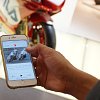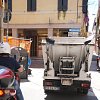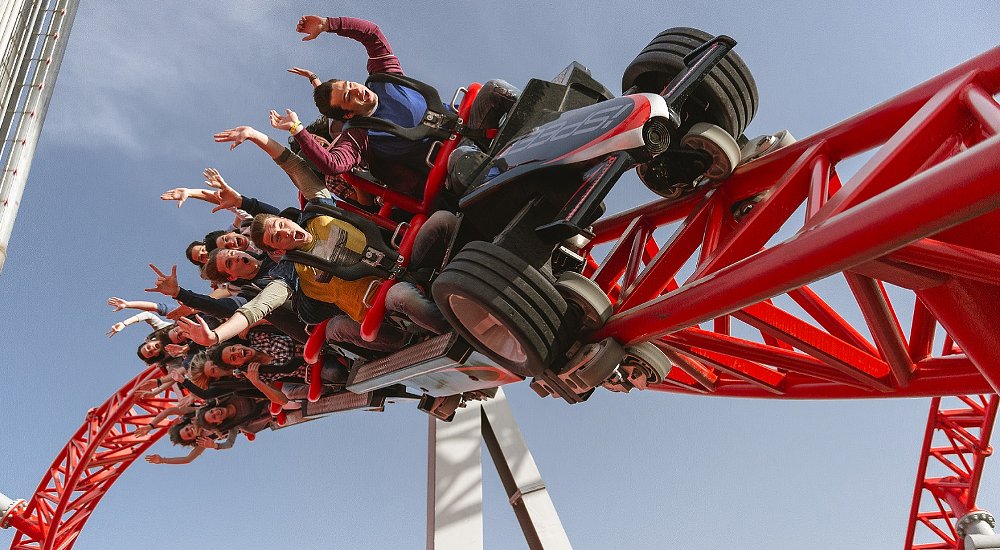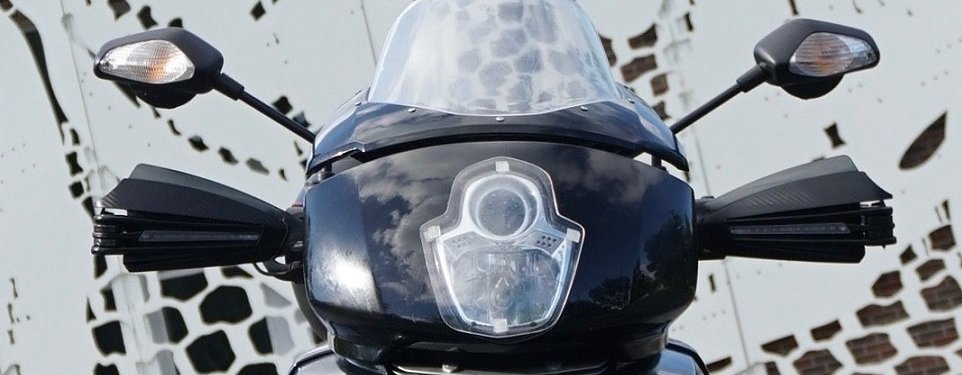I got myself into trouble with Livio Lodi — Ducati’s gruff official historian — before my interview with him had even begun. He got in the first question, asking me the purpose of my trip. I told him Mary and I planned to spend a few days in Bologna, to write a story about the things Ducati fans should see and do in their favorite motorcycle company’s hometown.
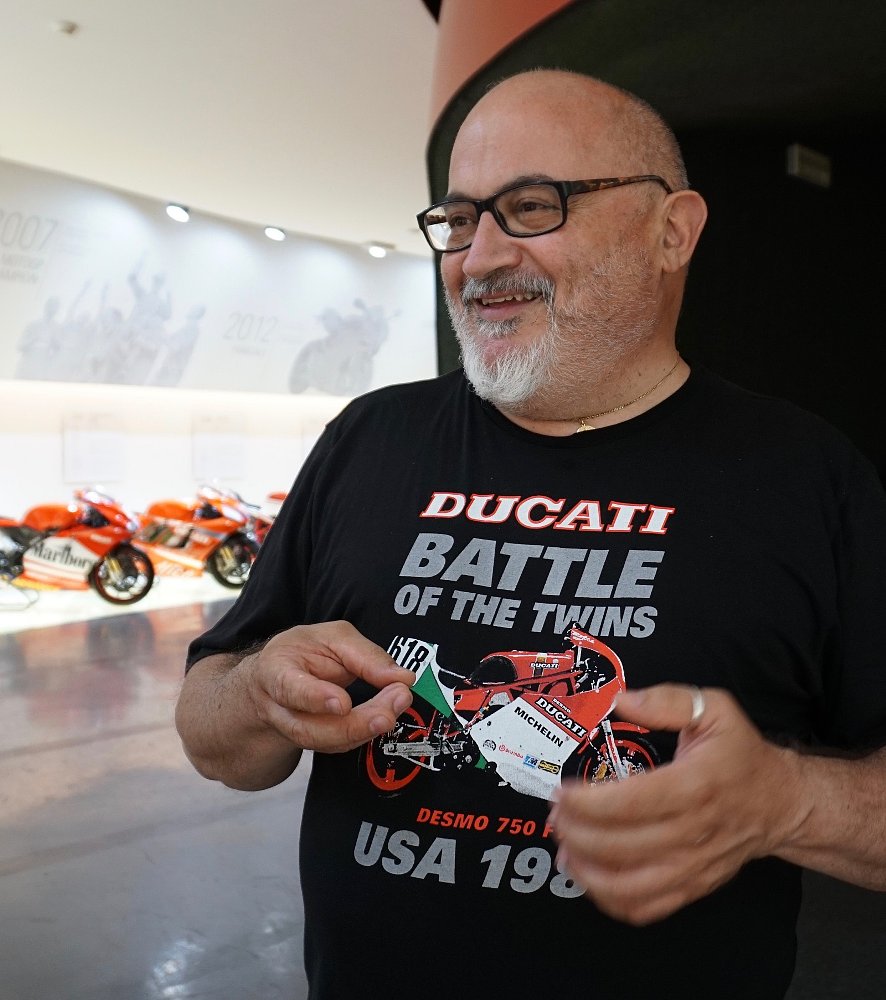
Lodi is personally offended that "spaghetti Bolognese" is served worldwide, even though real Bolognese rarely eat spaghetti, and never with that characteristic ragù sauce. Already on the defensive, I didn’t dare bring up the point that in the United States, Bologna’s famous sausage — baloney — also means bullshit!
Bologna, perhaps understandably, has a chip on its shoulder. It’s roughly half-way between Rome and Milan; historically it was often thought of as a mere way-station between those two. Today Rome, Venice, and Florence attract far more foreign tourists. Bologna, however, is a popular destination for Italians, who come for its rich food and its large and well-preserved old city, with miles of pedestrian-friendly porticoes.
Bologna was already an important center back in Roman times, but the city was walled and took its current shape in the medieval period. It’s renowned as the site of the world’s first university — Nicolaus Copernicus and Dante Aligheri were alums. It’s in Italy, so historic churches and photo-op piazzas abound, along with museums — the expected Etruscan, Roman, medieval, renaissance, and baroque collections can all be perused — along with Museo Ducati, of course, which was extensively renovated in 2016 for Ducati’s 90th anniversary.
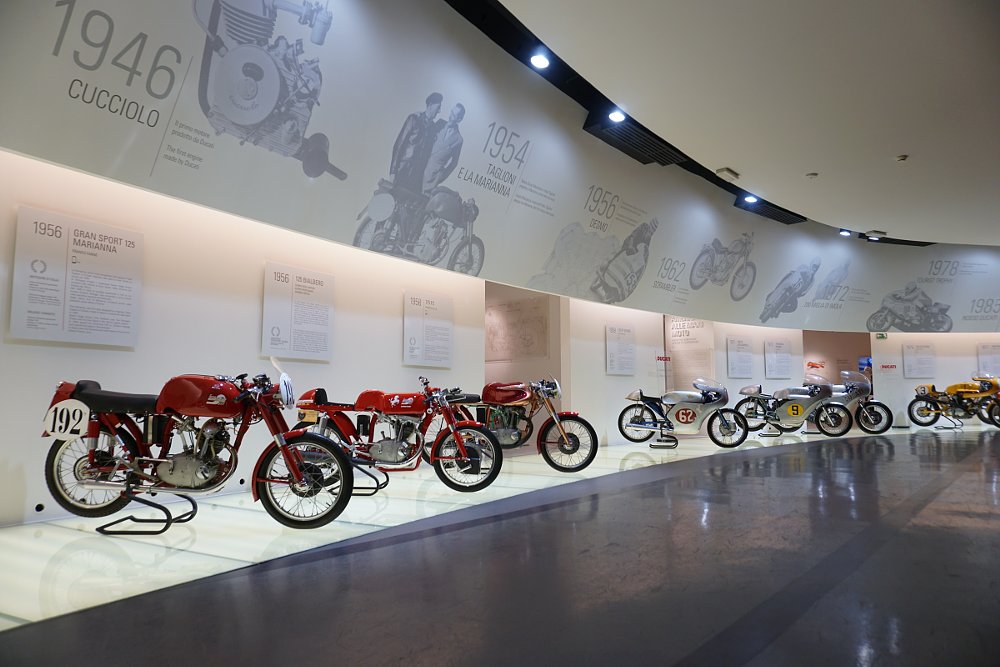
First stop: Ducati Museum and factory tour
This year, Livio Lodi expects the museum to draw about 45,000 fans, making it one of the city’s top attractions. While I walked around looking at the motorcycles, Mary took photos and surreptitiously eyed other visitors. At one point she sidled up to me, cocked an eyebrow towards a cute Japanese couple and whispered, “Do you suppose she bought that red dress just for this visit?”
When I guessed yes, Mary hissed, “These people are obsessed!”
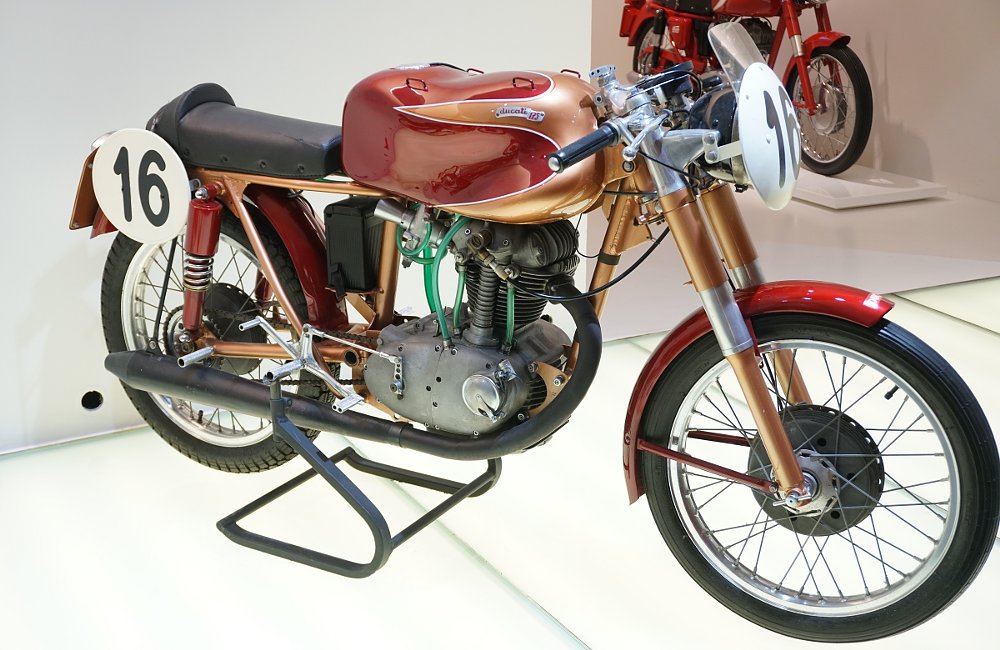
As an owner of the original Multistrada, I suppose I am one of “those people,” but even I have to admit that a visit to Museo Ducati puts the “cult” in cultural experience.
The factory is still on the original site — where Ducati started out making radios (!) — in the Borgo Panigale neighborhood. (The name comes from panico, the Latin name for the grain millet. In ancient times, panico was grown nearby in the rich soil of the Reno river floodplain.)
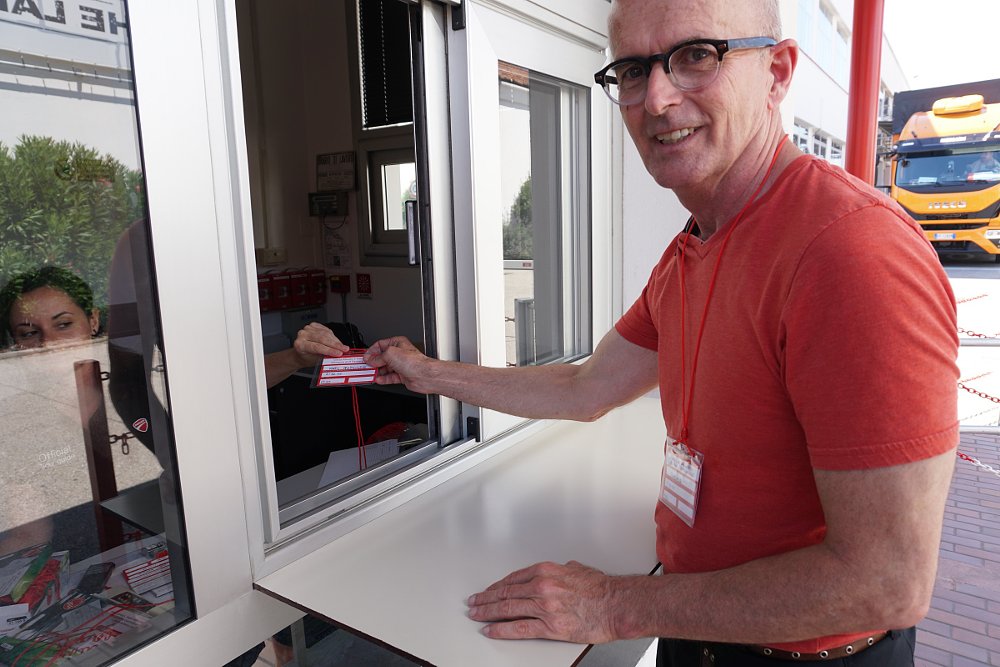
Visitors must show ID and sign in at the factory gate, but the process is quick. During high season, the museum’s open every day of the week except Wednesday. Drop-ins are welcome. Admission is €15, with discounts for students, seniors, and Ducati owners (so remember to bring your Ducati card). Groups of 10 or more also get a discount but must register in advance online. Admission is free if you’re a card-carrying member of the Desmo Owners Club.
I’ve taken factory “tours” where visitors never set foot on the actual factory floor. The Ducati tour’s the real deal; if you wanted to get any closer to the motorcycles, you’d have to pick up a wrench. Our guide often had to stop talking and herd half a dozen of us over to one side while some forklift loaded with parts trundled by. Once, we met a parts-delivery robot that seemed momentarily dismayed by the presence of several stationary pedestrians.
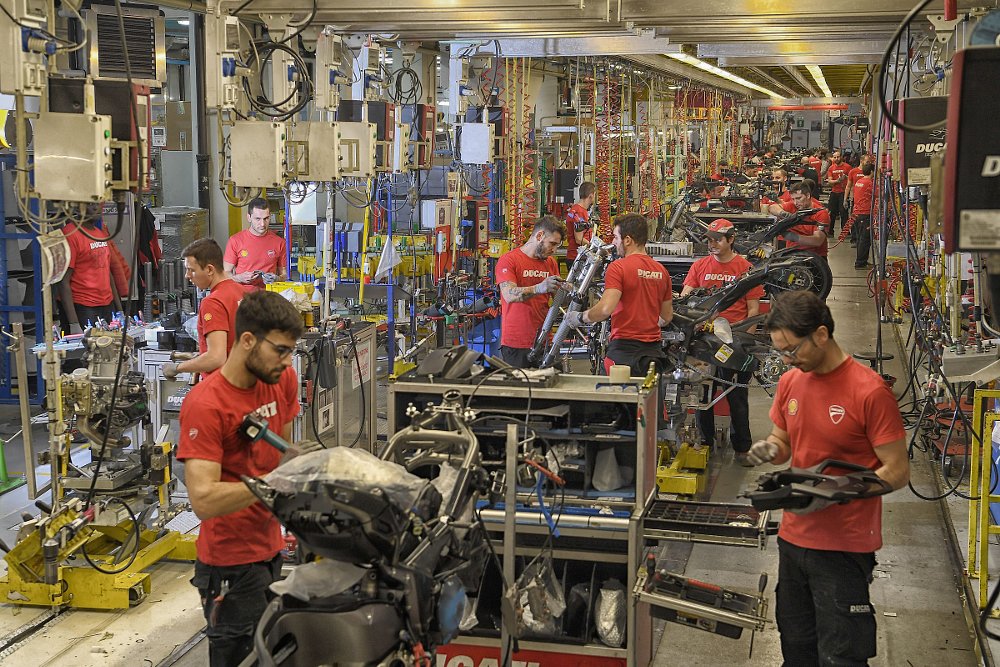
Each tour group votes on which assembly line to visit, and we chose a line where we could see a new V-4 get put together. Assembly teams work on whole systems; no one is just torqueing the same bolt over and over. And, while we watched the V-4 line, a Diavel came along; each line produces several different models, so from one bike to the next, each worker’s assignment can vary quite a lot. Presumably that cuts down on boredom. There’s lots of casual eye contact between visitors and workers, and the mood seems pretty positive.
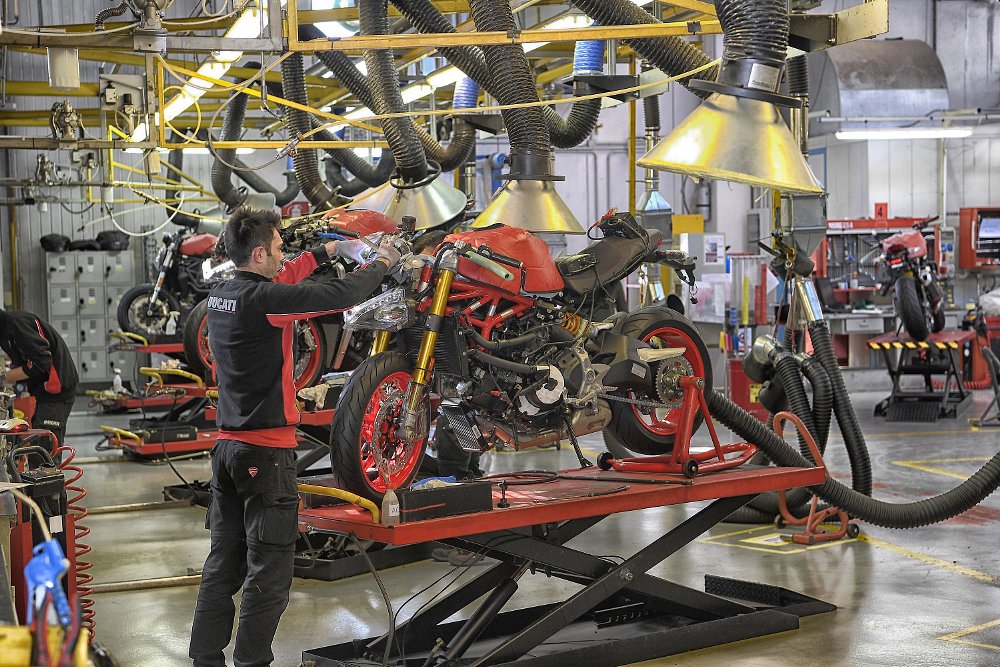
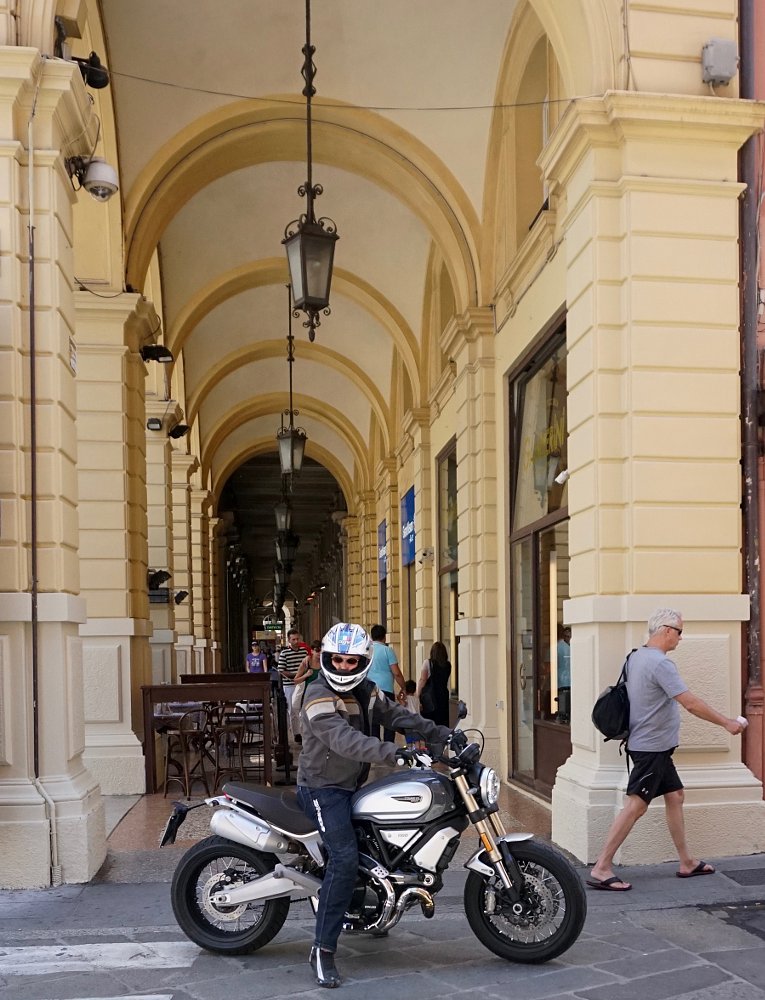
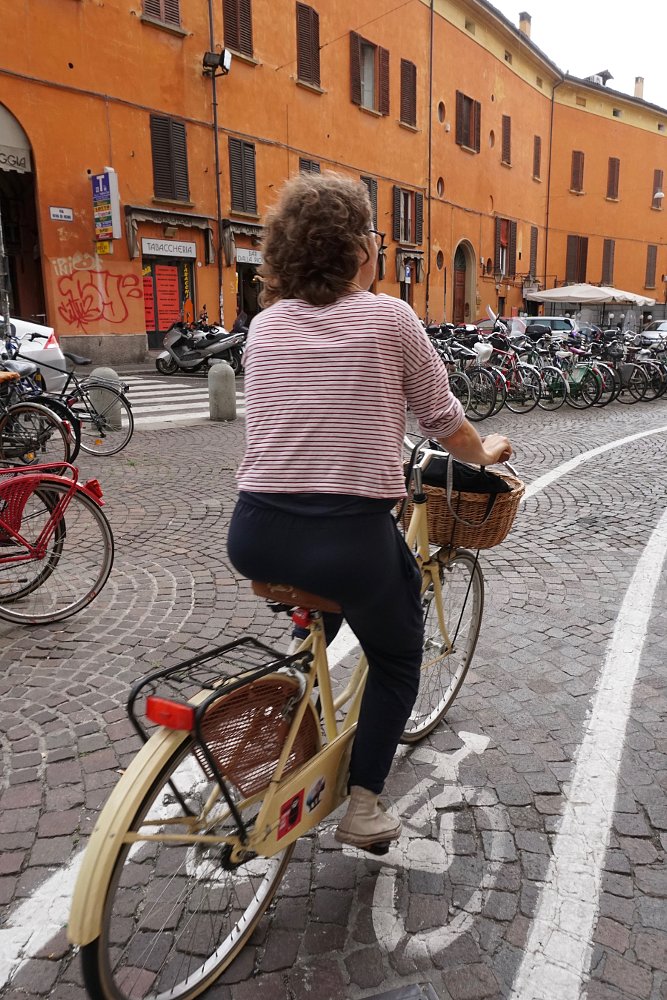
Exploring Bologna and the roads beyond
Once you understand the radial layout of the main roads, the newer parts of Bologna are pretty easy to get around. Riding a motorcycle will give you a little better access to the old part of the city, much of which is closed to non-resident autos but open to ’cycles. There’s almost no automobile parking to be found within the city walls, anyway.
Note that although you can legally enter the old city, once you’re in there it’s a maze of one-way streets and signs posting bewildering access restrictions, which are apparently enforced with traffic cameras. (Mary and I explored it on a Scrambler 1100 from Ducati’s press fleet, and I can only hope Giulio Fabbri, Ducati’s “foreign press” manager, doesn’t get too many tickets in the mail!) I admit that once the thrill wore off riding in Italian traffic, I appreciated Bologna’s excellent bus service, and the regular trains that run between Borgo Panigale and Bologna Centrale.
Our motorcycle really came into its own in the hills outside of Bologna. Fabbri told us that the Ducati’s professional test riders have a favorite road, Strada Provinciale 65 (aka “La Futa”) which runs south all the way from the old city wall to the Mugello race circuit.
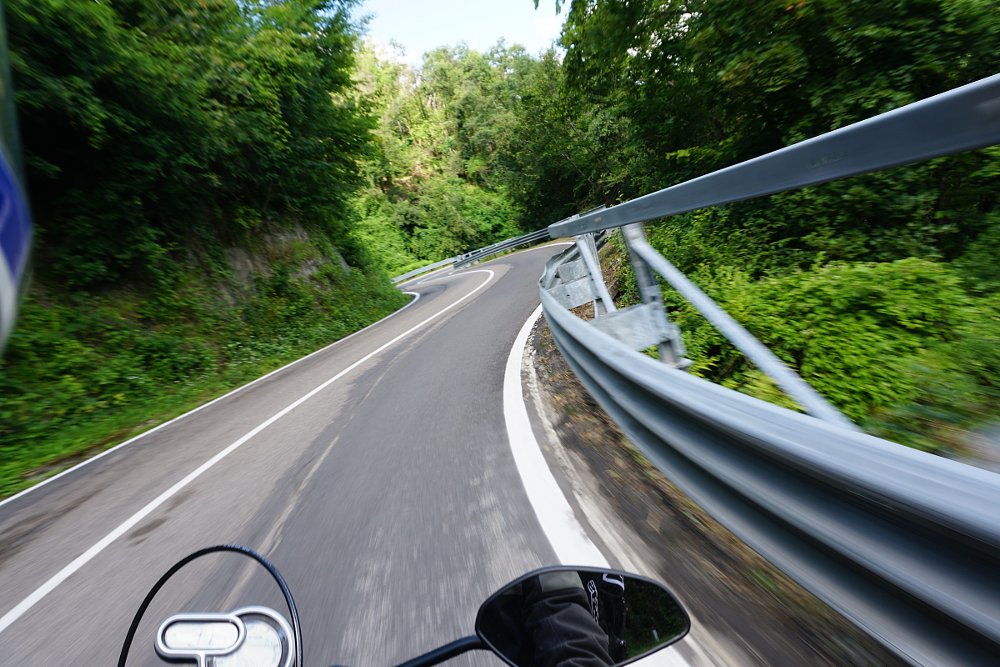
Soon after leaving Bologna, La Futa climbs to the top of range of hills that extends to Florence. The road dates from before motorized travel. Since climbs and descents were hard on horses, the road sticks to the high ground pretty much all the way. That makes for a flowing layout and spectacular views. As far as I can tell, as long as motorcyclists cool their jets in town, the Carabinieri are lenient on the open road.
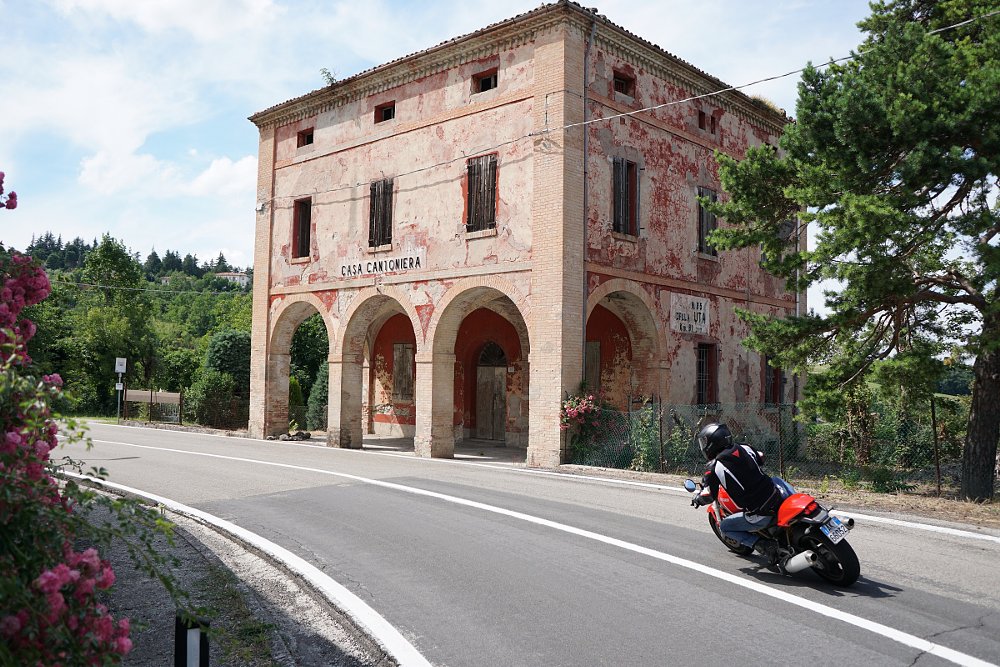
We rode it twice; it’s better on a weekday! All of Italy is bike mad, but the region around Bologna is really, really bike mad and sport bike riders converge on SP65. We saw lots of smooth, fast, controlled riding, but there are squids in the Mediterranean, too. After watching a few guys blow the centerline on blind turns (which is most of them) we turned off La Futa for a break, in search of reduced traffic.
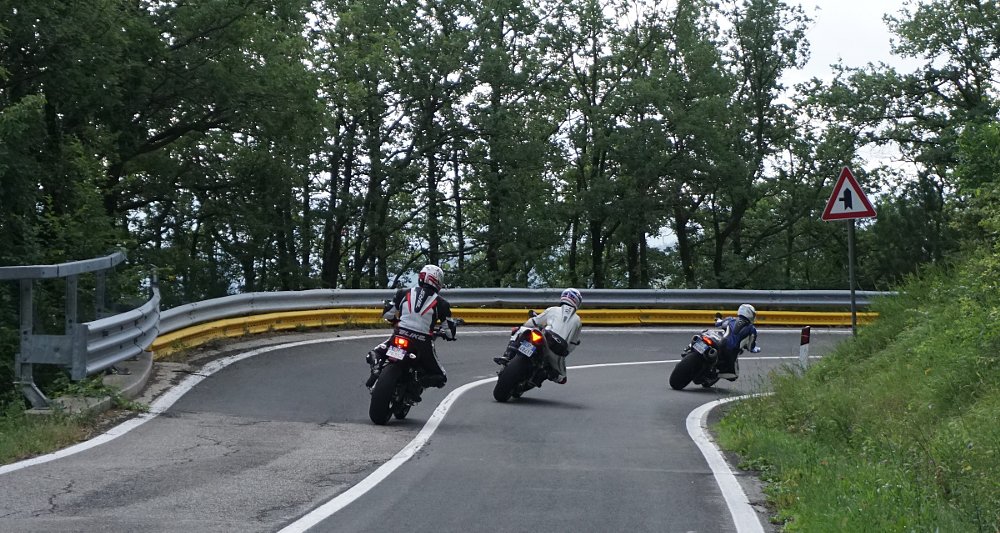
One of those roads less traveled took us to a small hillside trattoria at lunchtime, where I had the characteristic ragù sauce on my primi, a plate of bright green noodles which, indeed, bore scant resemblance to spaghetti.
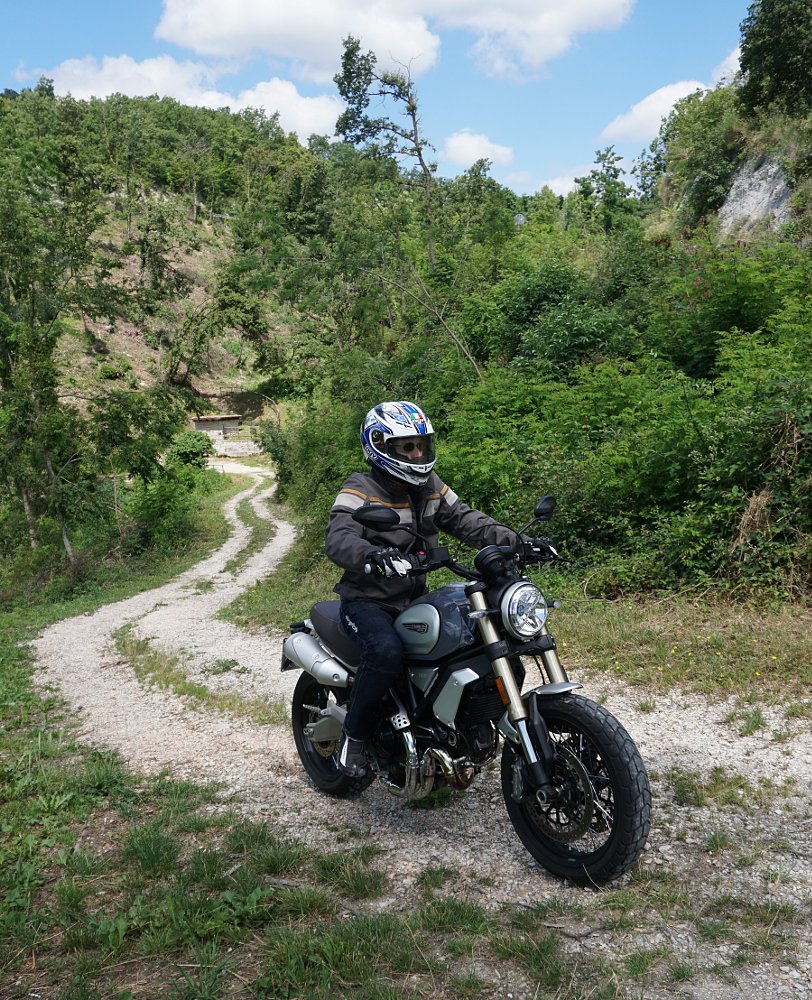
For our stay, Mary and I rented a quaint AirBnB apartment a few minutes from the factory gate for about $65 per night. Even in Italy, we prefer to stay in places where we can do at least some of our own cooking. Restaurant meals are usually good there, but they’re not cheap — at least, not by the standards of motorcycle journalists! Excellent ingredients, however, are very affordable. Most of the produce in Italian markets is picked when ripe — not weeks before, as ours usually is. It’s of noticeably higher quality than what you’d find in an American supermarket. Excellent bread and cheap-but-drinkable wines are to be expected. The region’s noted for cheeses, balsamic vinegar and cured meats.
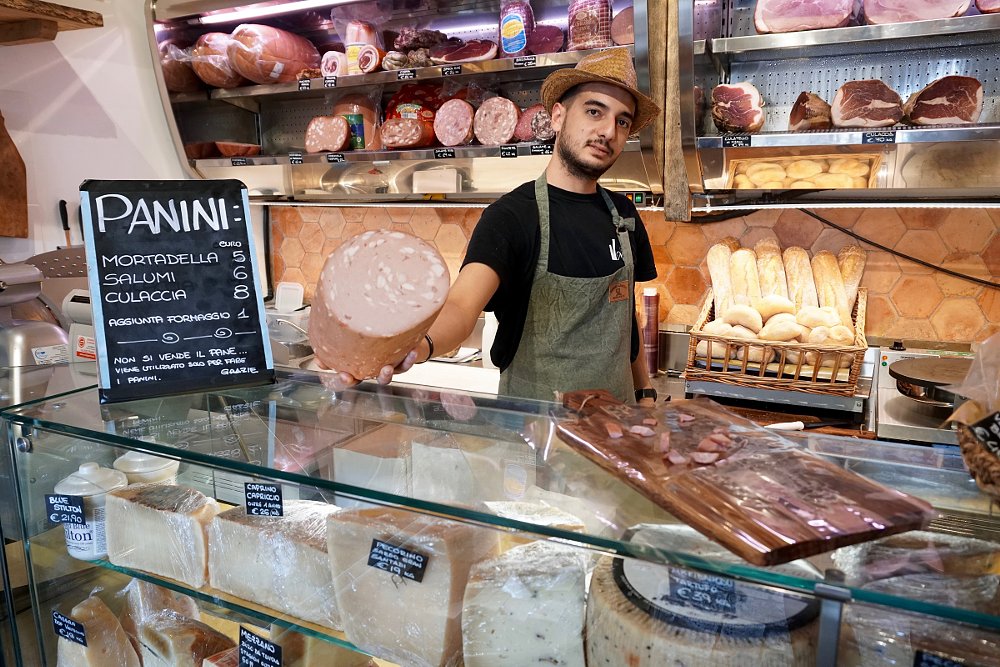
Ducatisti making the pilgrimage often stay at Hotel del Borgo, a tidy albergo five minutes from the factory. Judging from the front door, which is completely plastered with souvenir stickers from Ducati club members who have visited from all over the world, I’m not the first motorcycle journalist to recommend the place!
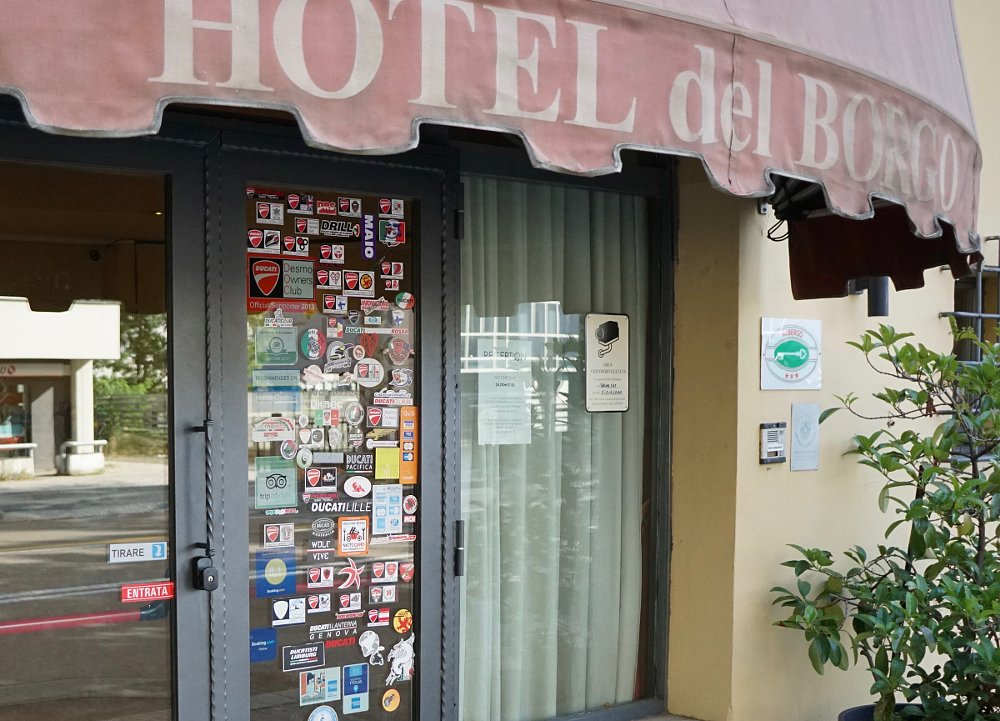
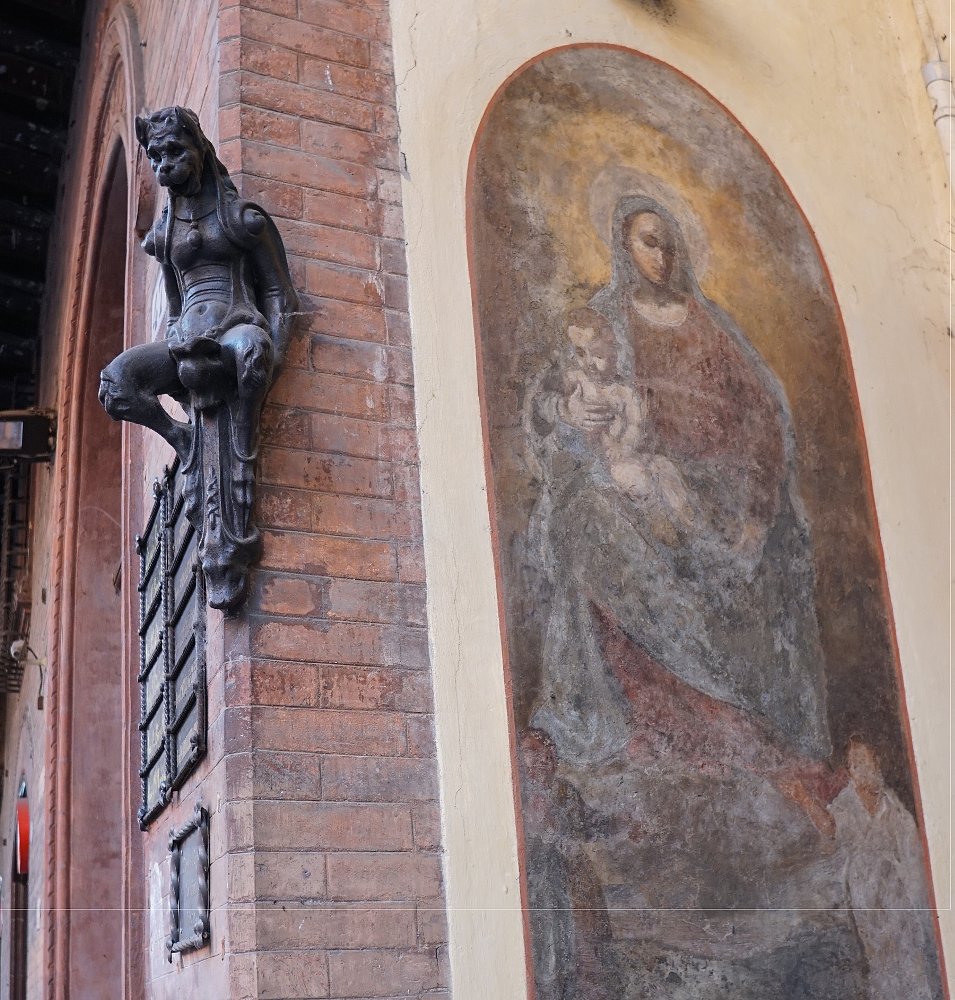
The Imola, Misano, and Mugello circuits are all within an hour of Bologna, so it’s relatively easy to plan a vacation that includes racing. The Ferrari museum in Modena is also nearby (even if the vehicles in there have two too many wheels).
Bologna has a mild climate. The average low temperatures from November through February would deter less-than-hardy motorcyclists, but it has a comfortable eight-month riding season. Any time from March to October is perfect for a riding vacation. (Though don’t come in August. Like other Italian cities, oppressive heat drives almost all the Bolognese either up into the mountains or down to the seashore.)
Italians have nicknamed Bologna, “la grassa,” meaning “the fat one” — a reference to that rich food. Some also call it “la rossa,” which is a reference to its traditional red roof tiles. Nowadays, la rossa could also be a reference to Ducati motorcycles, which have become an important part of the city’s self-image.
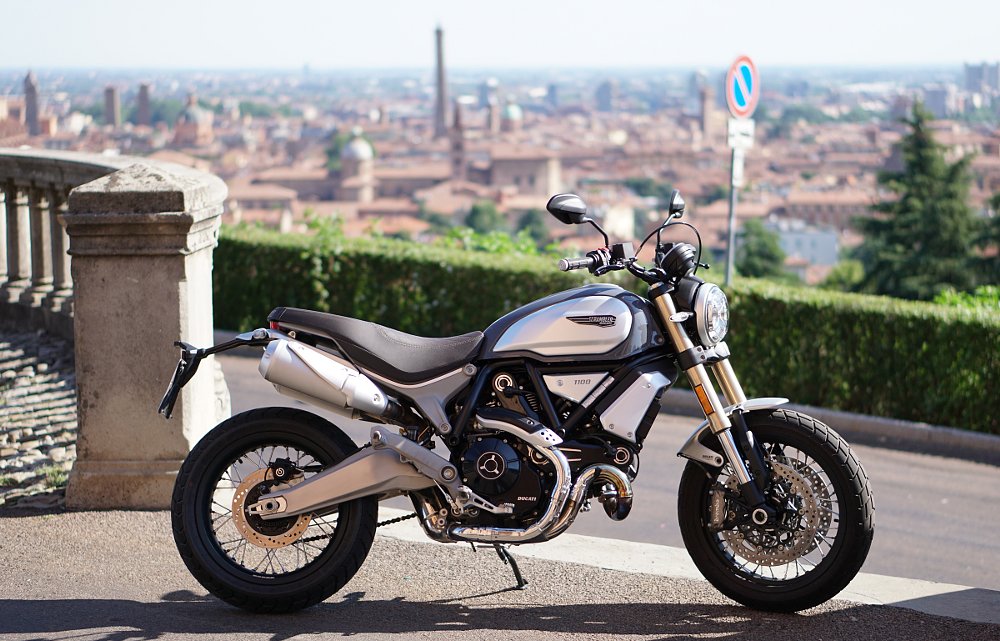
Giulio Fabbri told me that Ducati’s vision is that any customer entering a Ducati dealership, anywhere in the world, should feel like he’s visiting Italy, “right down to the coffee.”
That’s great, as far as it goes, but visiting the museum and factory, riding around Ducati’s home town, and especially riding La Futa should be added to every Ducatista’s bucket list.
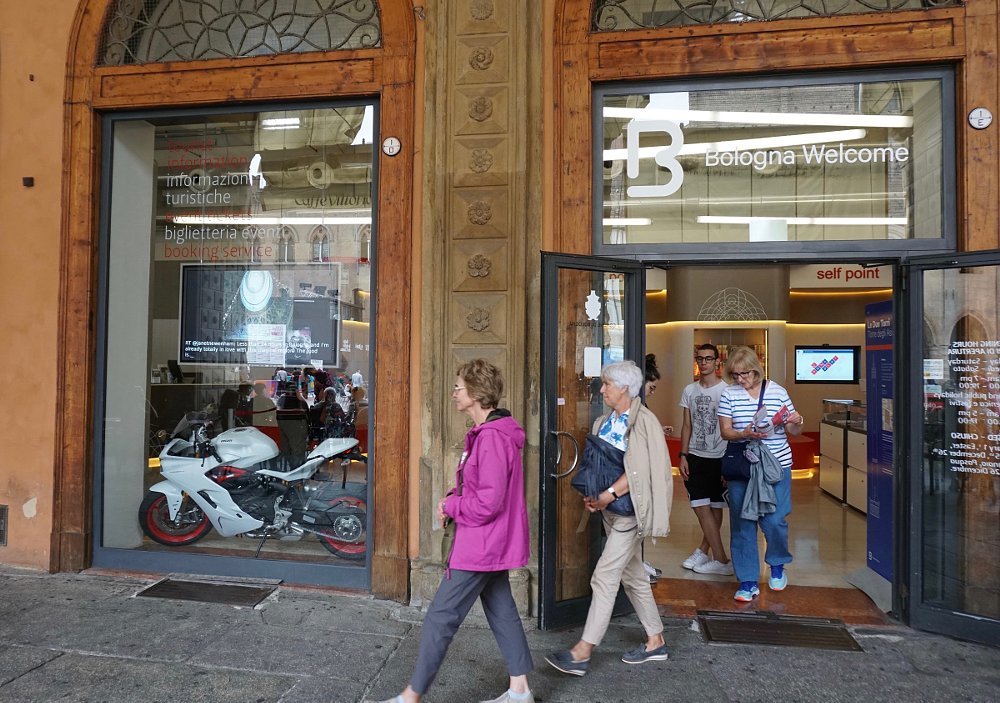
Tips and details for visiting Bologna
Getting there: Ducati’s Borgo Panigale factory is only a couple of miles from the Bologna airport. If you arrive by train, there are several commuter trains every hour connecting Bologna Centrale to Borgo Panigale; it’s an eight-minute trip.
Museo Ducati and Ducati Factory Tour: For information about museum admission and opening hours, or to book a factory tour, visit the museum web site. (If you’re accessing Ducati.com from the United States, you may need to click the American flag icon at the very bottom of the home page and select "International Site" to find the museum and factory tour links.)
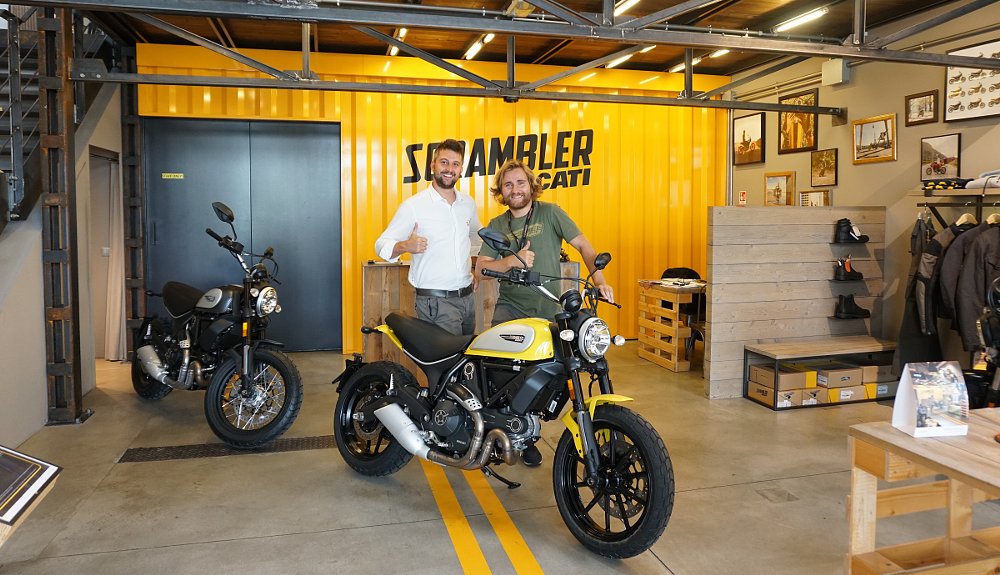
Motorcycle rentals: The Ducati Factory Store offers one-day and weekend “extended test rides.” Several Scrambler and Multistrada models are available at prices from €120/day. Loaner helmets are available. Contact Ducati Factory Store on Facebook to make arrangements.
HP Motorrad offers a number of Ducati models by the day or week, and can also supply helmets (mandatory in Italy), jackets, and gloves. Bikes are dropped off at Hotel del Borgo. Prices range from €95/day for a Scrambler to €780/week for a Panigale V4 S.
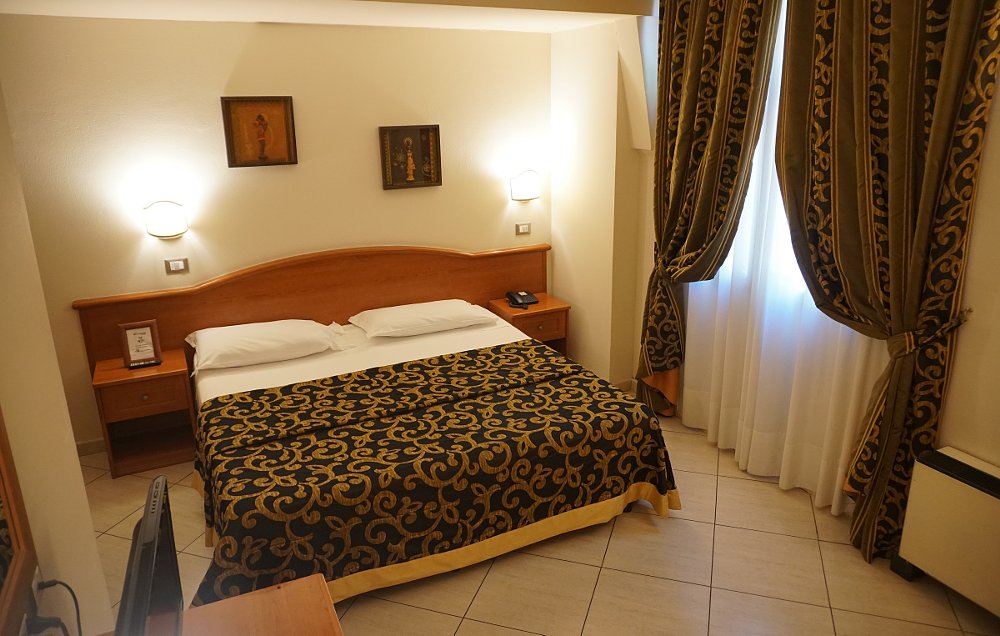
Hotel del Borgo: Via Marco Emilio Lepido 195, Bologna. Located on one of Borgo Panigale’s main commercial avenues, which runs between the factory and the medieval city center. At the time of this writing, rooms could be booked online for less than $60.
Ducati Scrambler Food Factory: There are two Scrambler-themed restaurants in Bologna. One in the old city, at Via D’Azeglio, 34 and another outside the old walls which is easier to ride to, at Via Stalingrado, 27/6. Best late on a Friday or Saturday.
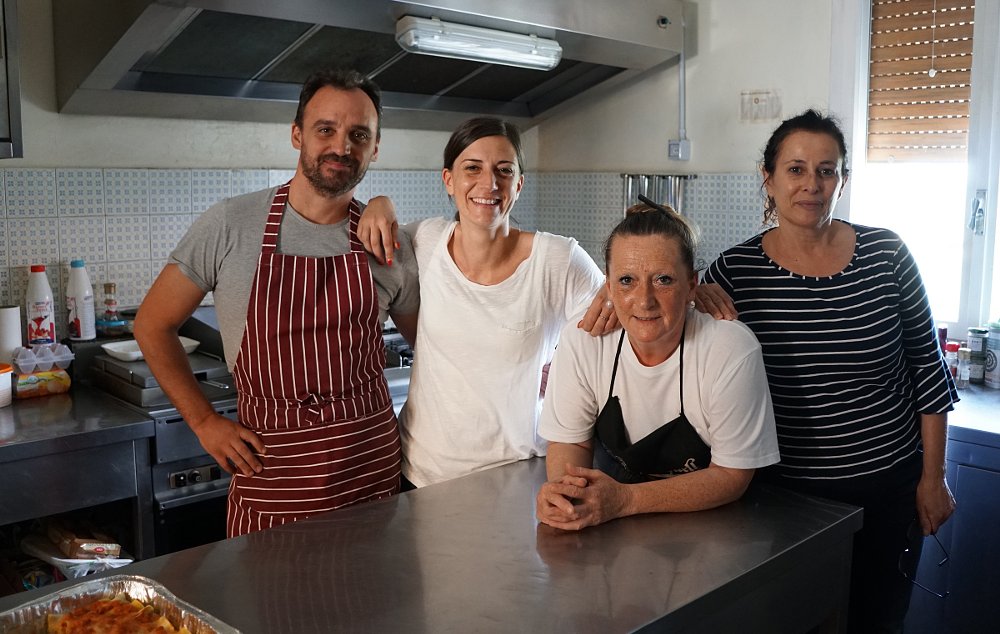
More traditional dining: Lunch break on La Futa: it’s worth mapping a route to Bar Trattoria Naldi, Via Barbarolo 8, Loiano. About one mile off SP65, roughly halfway between Bologna and Mugello. Charming, delicious, and traditional. Antipasti, primi, secondi, dolci, with mineral water and coffee for two (including wine for the passenger) about €60.
Also recommended in Borgo Panigale: Antica Trattoria del Pontelungo, Via Emilia Ponente 307. A local-favorite bistro, about halfway between Hotel del Borgo and the old city, that’s also open late. Its name comes from the long bridge over the river Reno.

 Membership
Membership






